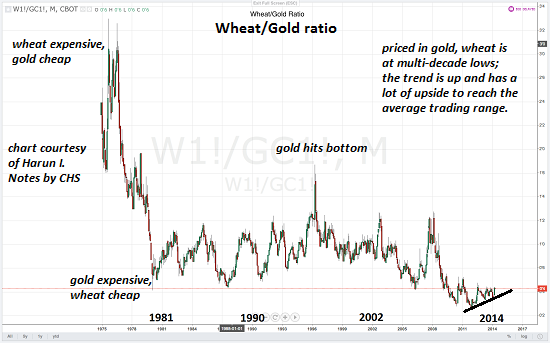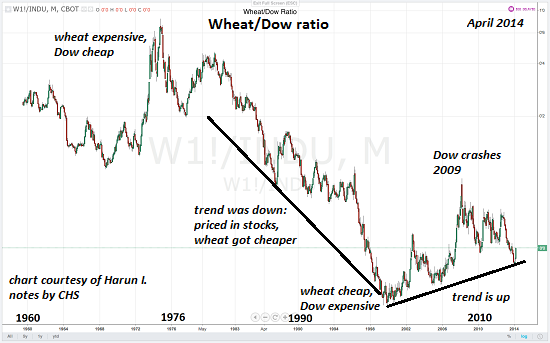A break above Malaysian ringgit 2,672/tonne could push prices higher
Malaysian palm oil futures on the Bursa Malaysia Derivatives were higher on Monday buoyed by strength in the energy complex, firm soya oil markets and a slightly weaker local currency. Higher energy prices could result in higher bio-diesel demand for palm oil.
WTI crude oil rose above $104 a barrel in early trade on Monday as increasing geopolitical tensions between Ukraine and Russia supported buying sentiment. Market participants are also watching for cargo surveyor export data for the first half of April, due on Tuesday, to gauge global demand for palm.
CPO active month June futures are moving on expected lines.
As mentioned in the previous update, though prices have bounced from Malaysian ringgit 2,610/tonne, break below MYR 2,595 could drag prices towards 2,550-65 levels, from where a possible intermediate bottom can be seen. However, since prices have closed on weaker note, it could consolidate in the 2,595-2,650 range.
A decisive break above MYR 2,672 could hint at strength again which could potentially push prices towards MYR 2,730-35 levels being a strong resistance level in the coming sessions. Favoured view: Expect prices to edge higher either after testing the above mentioned supports or directly moving above MYR 2,660/tonne levels. Only a direct fall below 2,573 could dash our bullish hopes.
As mentioned earlier, prices met an intermediate wave target at MYR 2,135 and corrective decline to MYR 2,345-50 levels, followed by a sharp third wave move to MYR 2,575-2,600 materialised.
Price structures suggest a possible third wave move ending at MYR 2,690 and a corrective, fourth wave with targets at MYR 2,450 or even lower. The fifth wave possibly ended at MYR 2,898 and a corrective A-B-C in progress with an equality target at MYR 2,615-20 levels and an extension even to MYR 2,545-50 .
RSI is in the neutral zone now indicating that it is neither overbought nor oversold. The averages in MACD have gone below the zero line of the indicator hinting at a bearish reversal. Only a crossover again above the zero line could at resumption in the bullish trend.
Therefore, look for palm oil futures to test the support levels and climb again in the coming sessions.Supports are at MYR 2,595, 2,575 and 2,545. Resistances are at MYR 2,665, 2,705 and 2,735
------------------------------
Refineries raise palmolein rates
 Edible oils ruled firm on Monday, tracking firm Malaysian palm oil futures which extended gain for second consecutive day. Local refineries increased their rates for palmolein and soya oil by ₹3 for 10 kg on the back of higher demand. Sources said that local stockists came forward with fresh orders for forward purchase.
Edible oils ruled firm on Monday, tracking firm Malaysian palm oil futures which extended gain for second consecutive day. Local refineries increased their rates for palmolein and soya oil by ₹3 for 10 kg on the back of higher demand. Sources said that local stockists came forward with fresh orders for forward purchase.
Liberty, Ruchi and Allana together have sold about 750-800 tonnes of palmolein at ₹603-605 and 100-150 tonnes sunflower refined oil at ₹662. Resellers offloaded 150-200 tonnes palmolein at ₹600-601. Indigenous edible oils were also showing slight current on renewed demand from brands.
Vikram Global Commodities (P) Ltd quoted ₹630/10 kg for Malaysia super palmolein. Liberty was quoting palmolein at ₹608, super palmolein ₹628 and soyabean refined oil ₹655. Ruchi quoted palmolein at ₹605, soyabean refined oil ₹655 and sunflower refined oil ₹665. Allana was quoting palmolein at ₹604-605, soyabean refined oil ₹656 and sunflower refined oil ₹665.
At Rajkot, groundnut oil telia tin was flat at ₹1,110 and loose (10 kg) at ₹700. In Mumbai nominal spot rates (₹/10 kg) were: groundnut oil 735 (730), soya refined oil 655 (652), sunflower exp. ref. 610 (605), sunflower ref. 670 (665), rapeseed ref. oil 675 (672), rapeseed expeller ref. 645 (642) cottonseed ref. oil 658 (655) and palmolein 601 (598).














